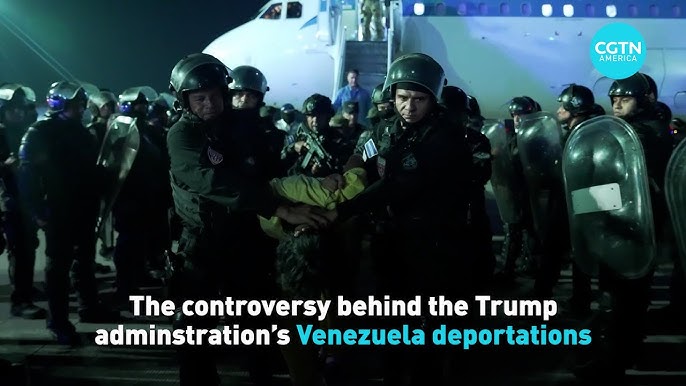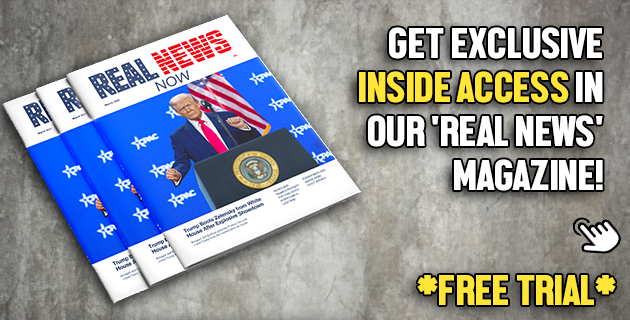Trump Insists ‘MS-13’ Tattoo is Real Despite Contradictory Evidence
In a recent interview, President Trump made a striking claim regarding an individual his team had inaccurately expelled to El Salvador. President Trump asserted that this man bore a gang-related tattoo, specifically on his hand. As the President articulated, the man had tattooed ‘MS-13’ on his knuckles. This claim came about a week following President Trump’s social media post featuring Kilmar Abrego Garcia, the deportee, with four distinct tattoos visible.
Featured in the shared image was Garcia with a tattoo on each of his fingers – a leaf, a smiley, a cross, and a skull. Above these varied symbols, the term “MS13” had been superimposed onto the image. However, the veracity of these symbols as indications of the MS-13 gang have been questioned by experts specializing in gang-related matters.
In the course of the interview, President Trump seemed to genuinely believe that the characters that had been added to the photo were actual tattoos, reiterating that ‘M-S-1-3. It says M-S-1-3.’ He staunchly asserted his belief in this, even when confronted with the fact that these characters had been digitally added to the original picture.
The President held firm even when it was pointed out that such characters had been digitally edited into the photograph. He claimed that the numbers and letters did indeed exist physically on the person’s hand, actually tattooed into his skin. The President maintained this stance despite evidence suggesting a difference between his claims and the actual situation.
President Trump did not back down from his insistence about the reality of these gang-related tattoos, even when presented with information to the contrary. He remained persuaded that he was in the right, despite a lack of conclusive evidence to support his position. The President drew a line in the sand concerning this matter, without acknowledging that the ‘MS-13’ marking did not appear to be an authentic tattoo on Garcia’s hand.
In his repeated assertion, the President was unyielding, insisting that the alphanumeric characters present in the image were indeed tattoos. His belief seemed unshakeable, even when informed about the actual nature of the digital manipulation done to the image. In this situation, nuance and details played a pivotal role, especially in regards to understanding the nature of the tattoos and their significance.
The steadfastness of the President’s claim raised eyebrows among some. As per his conviction, the digitally imposed letters and numbers exist as a real tattoo on Garcia’s knuckles. Amid questions and uncertainty, the President did not appear to acknowledge the possible discrepancy between his belief and the reality of Garcia’s tattoos.
In the face of skepticism and critique, President Trump did not yield to the arguments put forth that the ‘MS-13’ marking had been a digital addition rather than an actual tattoo. He remained resolute, convinced of the veracity of his claim. Despite the ensuing contention, the President steadfastly refused to admit that Garcia did not have ‘MS-13’ emblazoned on his skin.
Despite external evidence calling into question the validity of the President’s claim, he remained anchored in his initial view that Garcia had a tattoo illustrating his affiliation with the MS-13 gang. His insistence could perhaps be seen as indicative of his administration’s determined stance on this matter.
Even in the face of contrary information, the President’s conviction about the ‘MS-13’ tattoo remained unaltered. This insistence underscored how significantly he viewed the presence of such a marking. Although no firm evidence supporting his claim was presented, the President retained his unwavering conviction on the matter.
This instance serves as a illustrative example of how belief, especially in the context of a contentious topic like gang affiliation, can remain impervious to challenges. The President’s steadfast conviction regarding the existence of the ‘MS-13’ tattoo merits further scrutiny, as the facts of the matter remain uncertain.
Despite contradictions in the presented evidence, the President refused to concede that the ‘MS-13’ tattoo might not exist as he had thought. As the situation stands, various elements including digitally superimposed text and the absence of any definitive gang symbols on Garcia’s hand raise substantive doubts about the stated facts.
This event underscores the complexity of debates that revolve around contentious topics, in this case, the claim about a significant gang-related tattoo. Even when presented with potentially contradictory evidence, beliefs, as demonstrated by the President, can maintain their stronghold. In dealing with such important matters, a clear understanding and authentic representation of facts is crucial.



